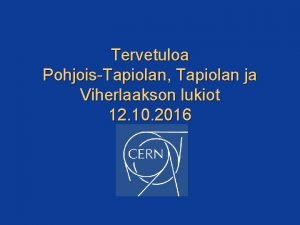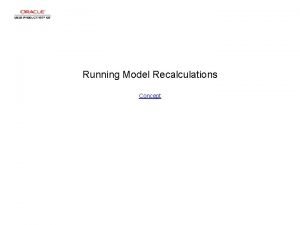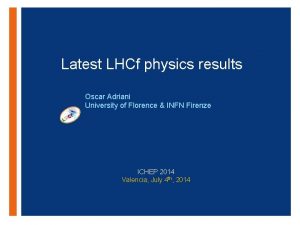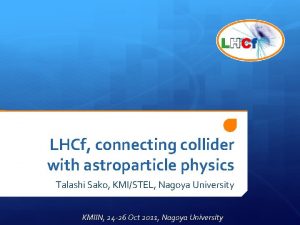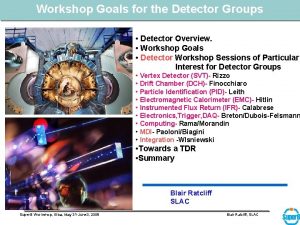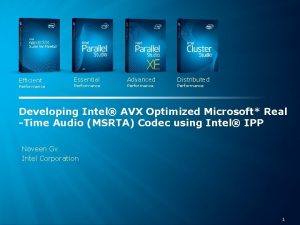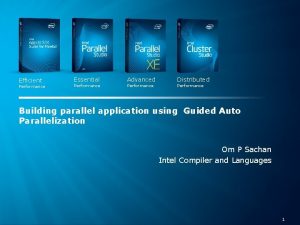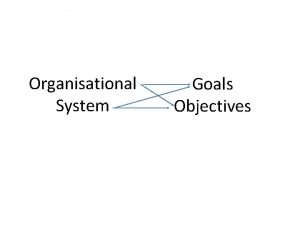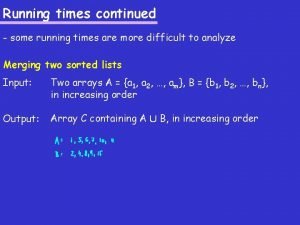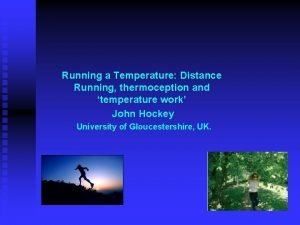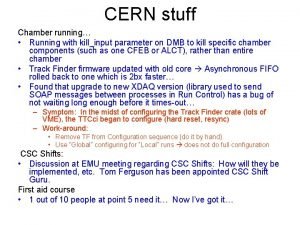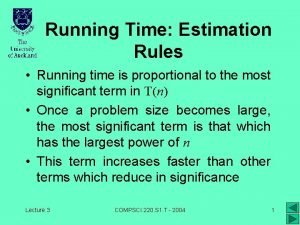Physics goals The LHCf detector Detector performance Running





























![σx=0. 172[mm] σx[mm] Number of events Detector #1 position resolution (Scintillating Fibers) BEAMTESTS RESULTS σx=0. 172[mm] σx[mm] Number of events Detector #1 position resolution (Scintillating Fibers) BEAMTESTS RESULTS](https://slidetodoc.com/presentation_image_h/750ca857b3f05fea10efbb529c205e33/image-30.jpg)








- Slides: 38

Physics goals The LHCf detector Detector performance Running plan THE LHCF DETECTOR CRIS 2008 - Cosmic Ray International Seminar Origin, Mass Composition and Acceleration Mechanisms of UHECRs Malfa, Salina Island, Eolian Islands, Italy, September 15 - 19 , 2008 Raffaello D’Alessandro Università & INFN - Firenze CRIS 2008 - Malfa, Salina Island, September 15 - 19 , 2008 1

CERN JAPAN: D. Macina, A. L. Perrot STE Laboratory Nagoya University: USA K. Fukui, Y. Itow, T. Mase, LBNL Berkeley: K. Masuda, Y. Matsubara, H. Menjo, T. Sako, W. Turner K. Taki, H. Watanabe FRANCE Waseda University: K. Kasahara, M. Ecole Politechnique Paris: Mizuishi, Y. Shimizu, S. Torii Compared to the usual HEP ones. M. Haguenauer Konan University: Y. Muraki Mainly a Japanese – Italian endeavor. SPAIN Kanagawa University Yokohama: IFIC Valencia: T. Tamura A. Fauss, J. Velasco Shibaura Institute of Technology: K. Yoshida A SMALL COLLABORATION Raffaello D’Alessandro Università & INFN - Firenze CRIS 2008 - Malfa, Salina Island, September 15 - 19 , 2008 2

LHCF: COSMIC RAYS INTERACT IN THE EARTH ATMOSPHERE Energy and composition, two of the main issues that From LHC: concern cosmic ray physics today. Astrophysical parameters - source type - source distribution - source spectrum - source composition - propagation Raffaello D’Alessandro Università & INFN - Firenze Nuclear Interaction - Monte Carlo used for shower simulations Forward Physics - cross section - particle spectra (E, PT, θ, η, XF) CRIS 2008 - Malfa, Salina Island, September 15 - 19 , 2008 3

GZK cutoff: 1020 e. V pg(2. 7 K) D Np ANKLE REGION Events have been observed by the AGASA collaboration which upset our understanding of the physics at the GZK cutoff. Raffaello D’Alessandro Università & INFN - Firenze CRIS 2008 - Malfa, Salina Island, September 15 - 19 , 2008 4

ENERGY SCALE AGASA x 0. 9 Hi. Res x 1. 2 Yakutsk x 0. 75 Auger x 1. 2 (insufficient) Berezinsky 2007 The details at the tail of the spectra. AGASA Systematics Total ± 18% Hadron interaction (QGSJET, SIBYLL) ~10% (Takeda et al. , 2003) Raffaello D’Alessandro Università & INFN - Firenze CRIS 2008 - Malfa, Salina Island, September 15 - 19 , 2008 5

N O T O PR Plotting the air-shower maximum vs. the energy, gives indication on the primary composition. CHEMISTRY Also an issue with cosmic ray composition N O IR Knapp et al. , 2003 Raffaello D’Alessandro Università & INFN - Firenze CRIS 2008 - Malfa, Salina Island, September 15 - 19 , 2008 6

Favours iron. Favours proton. CHEMISTRY Xmax vs. anisotropy. Do you accept AGN correlation ? Raffaello D’Alessandro Università & INFN - Firenze CRIS 2008 - Malfa, Salina Island, September 15 - 19 , 2008 7

COMPOSITION ENCORE Very simulation dependent. Very different results, depending on models and input parameters (KASKADE RESULTS). Raffaello D’Alessandro Università & INFN - Firenze CRIS 2008 - Malfa, Salina Island, September 15 - 19 , 2008 8

Simulation of an atmospheric shower due to a 1019 e. V proton. LHCF AND HECR SIMULATIONS No cut g: XF<0. 05 p, K: XF<0. 1 XF Feynman var. Composition: inferred from Xmax Energy Spectrum: inferred from the number of secondaries. The dominant contribution to the energy flux is in the very forward region ( 0). Raffaello D’Alessandro Università & INFN - Firenze CRIS 2008 - Malfa, Salina Island, September 15 - 19 , 2008 9

Cosmic ray spectrum LHCf first proposed using LHC, the highest energy accelerator available MEASURE THE FOWARD CROSS SECTION to calibrate MC simulation LHC Tevatron (14 Te. V ECM equiv. to Elab=1017 e. V ) code In this forward region the highest energy available measurements oft he p 0 cross 14 with Pe. V fixed-target interaction air y= section were done by. Ahas 100 UA 7 (E=10 e. V, the cm energy of a pp collision at the LHC 5÷ 7) AUGER Raffaello D’Alessandro Università & INFN - Firenze CRIS 2008 - Malfa, Salina Island, September 15 - 19 , 2008 10

HOW MUCH FOWARD ? Placed after the beam pipes split. Reaches down to θ=0. Detectors installed in the TAN region, 140 m away from the Interaction Point, in front of luminosity monitors. Raffaello D’Alessandro Università & INFN - Firenze CRIS 2008 - Malfa, Salina Island, September 15 - 19 , 2008 11

WHERE DO WE PLACE IT ? LHC In the end, it was decided to put it around interaction point 1. ATLAS. Raffaello D’Alessandro Università & INFN - Firenze CRIS 2008 - Malfa, Salina Island, September 15 - 19 , 2008 12

LHCF: LOCATION AND DETECTOR LAYOUT Detector I Tungsten Scintillator Scintillating fibers Detector II Tungsten Scintillator Silicon mstrips INTERACTION POINT IP 1 (ATLAS) 140 m Detectors should measure energy and position of g from p 0 decays e. m. calorimeters with position sensitive Beam line layers Two independent detectors on both side of IP 1 ü Redundancy ü Background rejection (especially beam-gas) Raffaello D’Alessandro Università & INFN - Firenze CRIS 2008 - Malfa, Salina Island, September 15 - 19 , 2008 13

4 pairs of scintillating fiber layers for tracking purpose (6, 10, 32, 38 X 0. ) Absorber 22 tungsten layers 7 mm – 14 mm thick (W: X 0 = 3. 5 mm, RM = 9 mm) DETECTOR #1 2 towers 24 cm long stacked vertically with a 5 mm gap Lower: 2 cm x 2 cm area Upper: 4 cm x 4 cm area 16 scintillator layers (3 mm thick) Trigger and energy profile measurements Raffaello D’Alessandro Università & INFN - Firenze CRIS 2008 - Malfa, Salina Island, September 15 - 19 , 2008 14

4 pairs of silicon microstrip layers (6, 10, 30, 42 X 0) for tracking purpose (X and Y directions) DETECTOR #2 2 towers 24 cm long stacked on their edges and offset from one another Lower: 2. 5 cm x 2. 5 cm Absorber Upper: 3. 2 cm x 3. 2 cm 22 tungsten layers 7 mm – 14 mm thick (W: X 0 = 3. 5 mm, RM = 9 mm) Raffaello D’Alessandro Università & INFN - Firenze CRIS 2008 - Malfa, Salina Island, September 15 - 19 , 2008 16 scintillator layers (3 mm thick) Trigger and energy profile measurements 15

DOUBLE ARMED DETECTORS Japanese – Italian endeavour. Detector #1 assembled in Japan. Detector #2 assembled in Italy. Arm#2 Detector Arm#1 Detector Raffaello D’Alessandro Università & INFN - Firenze CRIS 2008 - Malfa, Salina Island, September 15 - 19 , 2008 16

INSIDE DETECTOR #2 Silicon modules and calorimeter briquettes. Raffaello D’Alessandro Università & INFN - Firenze CRIS 2008 - Malfa, Salina Island, September 15 - 19 , 2008 17

LHCf DETECTOR INSTALLATION Installation performed in two phases: 1. Pre-Installation (Jan/Apr 2007) Baking out of the beam pipe (200 °C) 2. Final Installation (Jan 2008) Luminosity Monitor (BRAN) ATLAS ZDC Raffaello D’Alessandro Università & INFN - Firenze CRIS 2008 - Malfa, Salina Island, September 15 - 19 , 2008 18

1. 2. Single photon spectrum p 0 fully reconstructed (1 g in each tower) p 0 reconstruction is an important tool for energy calibration (p 0 mass constraint) LHCF PHYSICS PERFORMANCE Basic concept: Minimum 2 towers (p 0 reconstruction) Smallest tower on the beam (multiple hits) Dimension of the tower Moliere radius Maximum acceptance (given the LHC constraints) Simulation is used to understand the physics performances Beam tests in 2004, 2006 and 2007 DPMJET 3 Used as Energy resolution QGSJET Examples QGSJETII Spatial resolution of the tracking part Of the models SIBYLL Raffaello D’Alessandro Università & INFN - Firenze CRIS 2008 - Malfa, Salina Island, September 15 - 19 , 2008 19

Detector #1 Detector #2 GEOMETRICAL ACCEPTANCE Two tower geometry. LHC beam pipe LHC collimators Raffaello D’Alessandro Università & INFN - Firenze CRIS 2008 - Malfa, Salina Island, September 15 - 19 , 2008 20

g Some runs with LHCf vertically shifted by SINGLE GEOMETRICAL few centimeters will allow us to cover the ACCEPTANCE whole kinematical range. Raffaello D’Alessandro Università & INFN - Firenze CRIS 2008 - Malfa, Salina Island, September 15 - 19 , 2008 21

LHCF: ACCEPTANCE ON PTg -Eg PLANE Beam crossing angle A vertical beam crossing angle > 0 will increase the acceptance of LHCf Raffaello D’Alessandro Università & INFN - Firenze CRIS 2008 - Malfa, Salina Island, September 15 - 19 , 2008 22

DISCRIMINATION POWER 10 generated LHC interactions 1 minute exposure@10 cm s luminosity (SIMULATIONS) Discrimination between various models is feasible 6 29 -2 -1 Monte Carlo g ray energy spectrum Quantitative discrimination with the help of a properly defined c 2 discriminating (5% Energy resolution variable based on the spectrum account) shape (see TDR for details) Raffaello D’Alessandro Università & INFN - Firenze is taken into CRIS 2008 - Malfa, Salina Island, September 15 - 19 , 2008 23

SIMULATIONS (2) Energy spectrum of π0 expected from different models (Typical energy resolution for g is 3 % at 1 Te. V) p 0 geometrical acceptance Raffaello D’Alessandro Università & INFN - Firenze CRIS 2008 - Malfa, Salina Island, September 15 - 19 , 2008 24

Arm #1 DE/E=5% 200 mm spatial resolution Dm/m = 5% SIMULATIONS(4) p 0 mass resolution Raffaello D’Alessandro Università & INFN - Firenze CRIS 2008 - Malfa, Salina Island, September 15 - 19 , 2008 25

Raw neutron energy 30% energy resolution SIMULATIONS(3) Neutron energy distribution depends heavily on the model adopted Raffaello D’Alessandro Università & INFN - Firenze CRIS 2008 - Malfa, Salina Island, September 15 - 19 , 2008 26

Neutron p 0 NEW MODELS PICCO, EPOS Drescher, Physical Review D 77, 056003 (2008) Raffaello D’Alessandro Università & INFN - Firenze CRIS 2008 - Malfa, Salina Island, September 15 - 19 , 2008 27

BACKGROUND Raffaello D’Alessandro Università & INFN - Firenze CRIS 2008 - Malfa, Salina Island, September 15 - 19 , 2008 28

BEAM TESTS • • CERN : SPS T 2 H 4 2004, 2006, 2007 Incident Particles • Protons • Electrons • Muons 150, 350 Ge. V/c 100, 200 Ge. V/c 150 Ge. V/c Final Detectors Trigger Scintillator Raffaello D’Alessandro Università & INFN - Firenze CRIS 2008 - Malfa, Salina Island, September 15 - 19 , 2008 29
![σx0 172mm σxmm Number of events Detector 1 position resolution Scintillating Fibers BEAMTESTS RESULTS σx=0. 172[mm] σx[mm] Number of events Detector #1 position resolution (Scintillating Fibers) BEAMTESTS RESULTS](https://slidetodoc.com/presentation_image_h/750ca857b3f05fea10efbb529c205e33/image-30.jpg)
σx=0. 172[mm] σx[mm] Number of events Detector #1 position resolution (Scintillating Fibers) BEAMTESTS RESULTS E[Ge. V] Tests have been successful Analysis is still ongoing σ =0. 159[mm] üEnergy calibration of the calorimeters üSpatial resolution of the tracking systems y σy[mm] Number of events x-pos[mm] y-pos[mm] Raffaello D’Alessandro Università & INFN - Firenze E[Ge. V] CRIS 2008 - Malfa, Salina Island, September 15 - 19 , 2008 30

200 Ge. V electron X 0 42 30 10 6 50 Ge. V electron TRACKING WITH SILICON Implantation pitch 80 m. Read out pitch 160 m. 6, 10, 30, 42 Xo. Raffaello D’Alessandro Università & INFN - Firenze CRIS 2008 - Malfa, Salina Island, September 15 - 19 , 2008 31

σx=40 mm 200 Ge. V electrons σy=64 mm DETECTOR #2 (CONTINUED) Alignment in progress, very preliminary results. Silicon detector. Raffaello D’Alessandro Università & INFN - Firenze CRIS 2008 - Malfa, Salina Island, September 15 - 19 , 2008 32

DETECTOR #2 CONTINUED Energy with the silicon part only! 200 Ge. V electrons. DE/E ~ 12% Raffaello D’Alessandro Università & INFN - Firenze CRIS 2008 - Malfa, Salina Island, September 15 - 19 , 2008 33

ENERGY RESOLUTION DETECTOR #1, #2 Energy resolution of the calorimeter. Corrected for leakage. Raffaello D’Alessandro Università & INFN - Firenze CRIS 2008 - Malfa, Salina Island, September 15 - 19 , 2008 34

g Not in scale! g Carbon target (6 cm) in the slot used for beam monitor Calorimeters 0 9. 15 m Detector #1 Shower Profile @ First Sci. Fi Layer P RECONSTRUCTION 40 mm X Egamma=18 Ge. V Y • Dedicated trigger on both towers of the calorimeter was used Essential. We “invented” a special beam to test it. • Main problems: 7 proton on target (special setting of the SPS ) >10 – low photon energy (≥ 20 Ge. V) 20 mm – Direct protons in the towers Y Egammahits =46 Ge. V – Multi in the same tower X • 250 p 0 events were triggered (amidst background) Raffaello D’Alessandro Università & INFN - Firenze CRIS 2008 - Malfa, Salina Island, September 15 - 19 , 2008 35

RECONSTRUCTED P MASS 0 PRELIMINARY! Raffaello D’Alessandro Università & INFN - Firenze CRIS 2008 - Malfa, Salina Island, September 15 - 19 , 2008 36

• Phase-I Beam parameter Value # of bunches ≤ 43 • 900 Ge. V collision before ramping in 2008 (hope in a week from now!) Bunch > 2 msec • 10 Te. V run in 2008 during the LHC separation commissioning (low luminosity) LHCF POSSIBLE RUNNING Crossing angle 0 mrad • 14 Te. V run in 2009 during commissioning 140 mrad downward • Remove LHCf when luminosity reaches 10 SCENARIO cm s for radiation damage reasons Luminosity per < 2 x 10 cm s 30 -2 -1 • Phase-II 28 -2 -1 bunch • Re-install the detector at the next opportunity Luminosity < 1030 cm-2 s-1 of low luminosity run Bunch intensity 4 x 1010 ppb (b*=18 m) • Dedicated runs (crossing angle, etc. ) 1 x 1010 ppb (b*= 1 m) • Phase-III • Future extension for p-A, A-A run with upgraded detectors are under study Raffaello D’Alessandro Università & INFN - Firenze CRIS 2008 - Malfa, Salina Island, September 15 - 19 , 2008 37

CONCLUSIONS Beam Test in 2004/6/7: Full detector #1 & #2 tested Installation already finished ARM 1&ARM 2 already successfully pre-installed in 2007 Final installation successfully done in January 2008 Running conditions: Three foreseen phases Phase I: first runs during LHC commissioning Phase II: parasitic mode during TOTEM run? Phase III: Heavy Ion runs? Now we are waiting for the first collisions. . And of course. . . many sincere thanks to the organizers of this beautiful and extremely interesting conference. Raffaello D’Alessandro Università & INFN - Firenze CRIS 2008 - Malfa, Salina Island, September 15 - 19 , 2008 38
 The gingerbread man once upon a time
The gingerbread man once upon a time Running running running
Running running running Lhcf
Lhcf Strategic goals tactical goals operational goals
Strategic goals tactical goals operational goals Strategic goals tactical goals operational goals
Strategic goals tactical goals operational goals General goals and specific goals
General goals and specific goals Examples of generic goals and product-specific goals
Examples of generic goals and product-specific goals Modern physics vs classical physics
Modern physics vs classical physics University physics with modern physics fifteenth edition
University physics with modern physics fifteenth edition Physics ia sample
Physics ia sample Hát kết hợp bộ gõ cơ thể
Hát kết hợp bộ gõ cơ thể Ng-html
Ng-html Bổ thể
Bổ thể Tỉ lệ cơ thể trẻ em
Tỉ lệ cơ thể trẻ em Gấu đi như thế nào
Gấu đi như thế nào Tư thế worm breton
Tư thế worm breton Alleluia hat len nguoi oi
Alleluia hat len nguoi oi Kể tên các môn thể thao
Kể tên các môn thể thao Thế nào là hệ số cao nhất
Thế nào là hệ số cao nhất Các châu lục và đại dương trên thế giới
Các châu lục và đại dương trên thế giới Công của trọng lực
Công của trọng lực Trời xanh đây là của chúng ta thể thơ
Trời xanh đây là của chúng ta thể thơ Mật thư tọa độ 5x5
Mật thư tọa độ 5x5 Làm thế nào để 102-1=99
Làm thế nào để 102-1=99 độ dài liên kết
độ dài liên kết Các châu lục và đại dương trên thế giới
Các châu lục và đại dương trên thế giới Thể thơ truyền thống
Thể thơ truyền thống Quá trình desamine hóa có thể tạo ra
Quá trình desamine hóa có thể tạo ra Một số thể thơ truyền thống
Một số thể thơ truyền thống Bàn tay mà dây bẩn
Bàn tay mà dây bẩn Vẽ hình chiếu vuông góc của vật thể sau
Vẽ hình chiếu vuông góc của vật thể sau Nguyên nhân của sự mỏi cơ sinh 8
Nguyên nhân của sự mỏi cơ sinh 8 đặc điểm cơ thể của người tối cổ
đặc điểm cơ thể của người tối cổ Ví dụ về giọng cùng tên
Ví dụ về giọng cùng tên Vẽ hình chiếu đứng bằng cạnh của vật thể
Vẽ hình chiếu đứng bằng cạnh của vật thể Fecboak
Fecboak Thẻ vin
Thẻ vin đại từ thay thế
đại từ thay thế điện thế nghỉ
điện thế nghỉ


